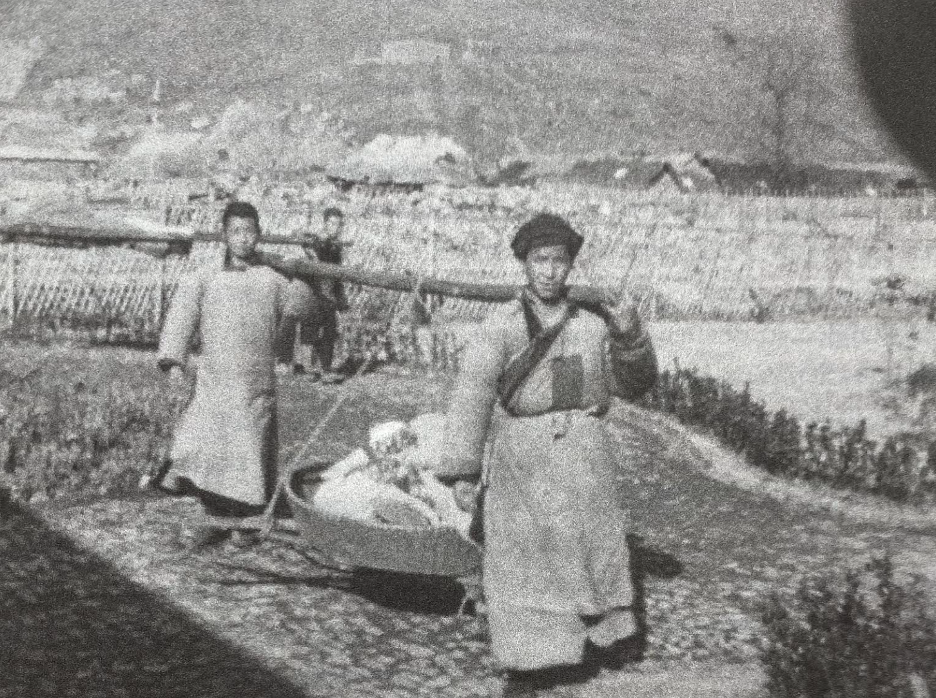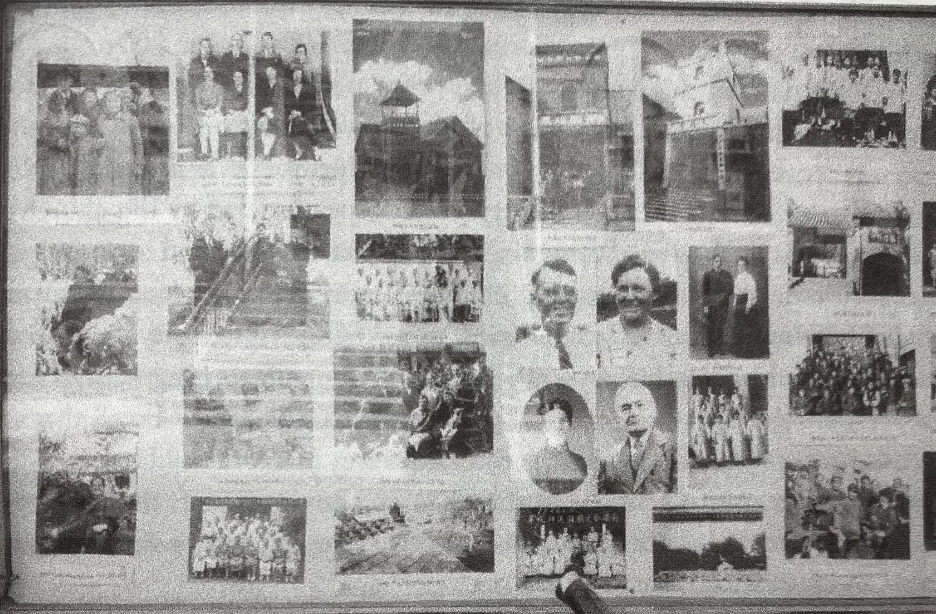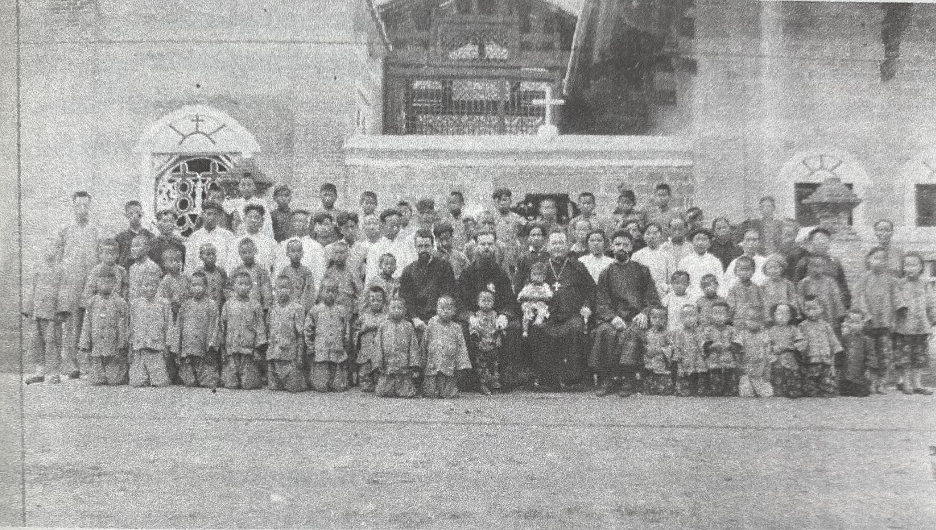All Things Visible and Invisible: On Joseph W. Ho’s “Developing Mission: Photography, Filmmaking, and American Missionaries in Modern China”
By Kelly McCormickJuly 13, 2022
:quality(75)/https%3A%2F%2Fdev.lareviewofbooks.org%2Fwp-content%2Fuploads%2F2022%2F07%2Fdevelopingmission.jpeg)
Developing Mission: Photography, Filmmaking, and American Missionaries in Modern China by Joseph W. Ho
In the last 25 years, quotidian and banal family portraits, mugshots, surveillance photos, records from prisons, and ethnographic and imperialist photographs have been embraced, providing important opportunities to rethink the history of photography. Art historian Geoffrey Batchen rebranded those ordinary photographs forgotten or ignored in established histories as “vernacular photography,” suggesting they could form a counter history to dominant perspectives and established histories. In a 2018 symposium held at Columbia University, “Imagining Everyday Life: Engagement with Vernacular Photography,” a group of photo scholars identified the central question posed by these images: “What forms of visibility and invisibility does [the vernacular] enable?”
One form of vernacular photographs receiving fresh attention are those taken by various missionary groups around the world. For example, from the 1850s to the 1940s, thousands of American Protestant and Catholic missionaries went to East Asia, cameras in hand. Recently digitized collections of their photographs such as USC’s International Mission Photography Archive (1860–1960), UBC’s Japan-focused John Cooper Robinson Collection (1870–1955), and the University of Bristol’s Historical Photographs of China Collection (1850-1950), give unprecedented access to the lives and work of these missionary photographers, as well as those who had economic interests in East Asia. Outsiders to the communities they imaged, each hoped that by pressing the shutter, they would become closer to their subjects. The photographs are opportunities to understand the structures of power that rendered their work visible. They also beg the viewer to ask: whose history do missionary photographs really belong to?

In Developing Mission: Photography, Filmmaking, and American Missionaries in Modern China, Joseph W. Ho renders visible photos made in religious worlds long invisible to the public, through a careful reading of missionary photographs taken in China during the early to mid-20th century. The vast archive of photographs created by missionaries to China in this period has largely been ignored, both by scholars focusing on missionary activity in China and by historians of Chinese photography. The photographs were “perceived as too foreign or too far removed from indigenous experience, or as myopically imperialist, antimodern, or religiously biased.” As Ho argues, the reality was more complicated than these brushstroke impressions. Drawing on family archives of former Protestant and Catholic missionaries, Ho shows how missionaries to China eagerly seized upon new optical technologies to record and transmit messages of their enterprises. As such, many of the photographs reproduced in the book were private images, records of intimate encounters in religious settings. For the missionaries and Chinese community members Ho interviews, these photographs evoke memories of the strong connections that were forged in the 1920s through the 1940s and severed once the missionaries were forced to leave China in the 1950s. Some missionary images leave the closed circuit of the missionary community and enter the mass media, where they are presented as a testament to the missionaries’ ability to embed themselves within communities. The digital companion to Developing Mission, accessible to University of Michigan users or by request, adds to the online compendium of photographs once only found in private archives, but now visible alongside other missionary photographs taken around the globe.
The photographs taken by missionaries during and prior to the mass upheavals of the Chinese Civil War (1927–1949), the Second Sino-Japanese War (1937–1945), and the expulsion of missionaries from mainland China in the 1950s, remain as records of communities that have long since dispersed to other parts of the world. In reconstructing the environments in which these images circulated, Ho urges us to approach both cameras and missionaries as mediators: between subject, maker, and viewer, or between God, people, and across nations. The photographs they took reflect the everyday that missionaries navigated. They show the relationships with the community they sought to convert, educate, and provide medical attention for. For the missionaries, photographs were crucial to the process of building and making communities visible. The religious-cultural space of missionary endeavors was constructed through photographs sent back to home churches, which were then published in institutional newsletters and magazines or shown as slide shows for congregations. Film reels similarly were passed to congregations in Japan and the United States to garner sympathy for antiwar campaigns or raise funds for missionary hospitals. And yet, the still and moving images that constructed and supported these activities were rendered invisible once a mission ended.

Ho’s examinations of missionary photographs offer a compelling perspective on noncombatant photography during times of war. As Ho argues, due to their linguistic and cultural fluency, missionaries were able to travel through conflict zones with greater ease than foreign photojournalists. When published in Life magazine, still frames from 16 mm film footage taken by Reverend John Magee captured atrocities committed by the Imperial Japanese Army in Nanjing in 1938 and transformed the missionary from maker of images for Christian communities to witness and documentarian of conflict for global audiences. More than that, missionaries used photographs and film footage of wartime atrocities to critique the absurdity of Japanese propaganda and try to sway the opinions of Japanese Christians. For example, they filmed Japanese posters that depicted benevolent soldiers delivering food hanging beside the homes of survivors who recounted the brutal rape and murder of their family. To this day, missionary photographs and films of war crimes remain one of the major pieces of evidence scholars can use to confront Japanese right-wing ultranationalist denials of wartime atrocities.
Aligning the technological history of the camera with the change in missionary approaches to their spiritual and humanitarian work, Ho urges the reader to appreciate how missionaries seized upon the global proliferation of modern visual technologies of the radio, cinema, and print culture to spread their messages and document their community formation. He invokes theories of imagined communities based on the circulation of print culture and networks built by human and nonhuman actors. In so doing, Ho elaborates a “missionary modernity” that was constructed and shaped by photographs. In the 1920s and 1930s, missionary modernity manifested as the process of “deploying modern medical and educational methods in parallel with religious conversion and Christian world making.” In celebrating a modernity experienced and created by missionaries, Ho embraces a progressive understanding of modernity that ignores the realities of violence and imperialism as necessary to the construction of modernity. Crucial to any discussion of modernity is negotiation with the construction of power: in this case, the relationship between maker and subject of the photograph. Ho characterizes the goals of missions as shifting over time, from being closely aligned with Western imperialism to a form of religious “collaboration” with locals. Through his readings of missionary photographs, Ho is constantly searching for ways of transforming the act of photography away from a “one-directional imposition of foreign missionary ideals” into something that bears evidence of a cocreated spiritual community. Ho is committed to the belief that missionary photographs were “not characterized by authoritative seeing as knowing, but by visualizing and participating.” But with little attempt to understand the subject photographed — that is, when it is only the photographer’s perspective that is recorded — how is the missionary’s viewpoint not authoritative?
As Ho writes, most scholars have either ignored or lumped missionary photography into the category of Euro-American colonial projects to control and extort indigenous populations. As someone who holds this perspective, it is very difficult to consider that people who believe they need to impart knowledge, medicine, architecture, and religious practices onto those with different cultural, and usually economic, backgrounds could possibly have equal relationships with them. In Canada, children died when they were forcibly taken from their families to attend Catholic schools from 1831 to 1996 — their bodies continue to be unearthed. It is difficult to stomach terms like “missionary modernity” without a keen awareness of the dark underbelly of that same modernity. But Ho shows that not all missionizing efforts were the same. The Catholicism of Canada’s residential schools is not the Catholicism of West Hunan nor the Protestantism of Shunde. Certainly, the photographs taken by missionaries across all denominations are evidence of their belief that they were connecting with the communities in which they lived.

Ho ultimately does not address the tension in searching for evidence of the positive value created by missionary photographs within the social and cultural spheres in which they functioned. This limitation is most apparent when he discusses medical missionary photography. Building medical facilities, training Chinese staff, and treating Chinese patients were central components of missionary work. But it was also missionary image making that established the racist trope of China as the “Sick Man of Asia” in the mid to late 19th century. These earlier photographs are necessary context for understanding how, just decades prior to the period Ho focuses on, missionaries photographed the Chinese body, such as bound feet, to portray Chinese cultural “backwardness.” They distributed these photographs in medical journals and circulated X-rays of bound feet at public meetings across China to shame communities into changing their practices.
Instead, Ho implores us to interpret the missionary’s omission of images of untreatable diseases in their official reports in the 1930s as acts of compassion (they published “before” and “after” photographs of successful treatments). Great effort is made to understand the position and perspective of the missionary photographer as medical image maker, but little to understand how the long-suffering patient may not have been in the position to give consent. Rather than addressing how the values that went into medical image making dovetailed with understandings of power and race in the doctor-patient relationship, Ho instead seeks to empathize with the feelings of powerlessness that missionary doctors may have felt when they were not able to cure patients. In short, the medical image making of the 1930s is treated as though it was created and circulated in a vacuum, with no connection to the 50 years of photographs that came prior.
On the whole, this book tells the history of missionaries in China and the photographs they made. Their specificity and “apartness” are precisely what has kept these images from being considered collectively by historians of photography and of China. Theorist of photography Ariella Azoulay argues that we cannot tell the histories of photography as separate, unique histories of specific groups. Quite to the contrary, from its invention, photography around the world modeled itself on an imperialist vision. Global imperialism and the advancement of optical technologies were not two things developing independently,
[T]he shutter was not a technical improvement or […] a marker of mechanical progress, but as a device that enabled the cracking of worlds, the partitioning of lands, and the mass looting of objects […] So rather than looking at photography as a world apart, we have to understand photography as a part of racial capitalism, which enables the invisibilization of other.
Ho succeeds in making missionaries and their photographs visible once more and showing how they continue to connect some of their members across the communities they imaged, but we are left wondering about those who have been rendered invisible in this telling.
¤
Kelly McCormick is a historian of modern Japanese visual and material culture at the University of British Columbia.
LARB Contributor
LARB Staff Recommendations
Diplomatic Epithets: On Peter Martin’s “China’s Civilian Army” and Yuan-Tsung Chen’s “The Secret Listener: An Ingenue in Mao’s Court”
Anatol Klass reviews two books about China's diplomacy.
The Shocks in China That Were Heard (and Not Heard) Around the World
Lev Nachman on two books about China in the 1980s: Isabella Weber’s “How China Escaped Shock Therapy” and Jeremy Brown’s “June Fourth.”
Did you know LARB is a reader-supported nonprofit?
LARB publishes daily without a paywall as part of our mission to make rigorous, incisive, and engaging writing on every aspect of literature, culture, and the arts freely accessible to the public. Help us continue this work with your tax-deductible donation today!